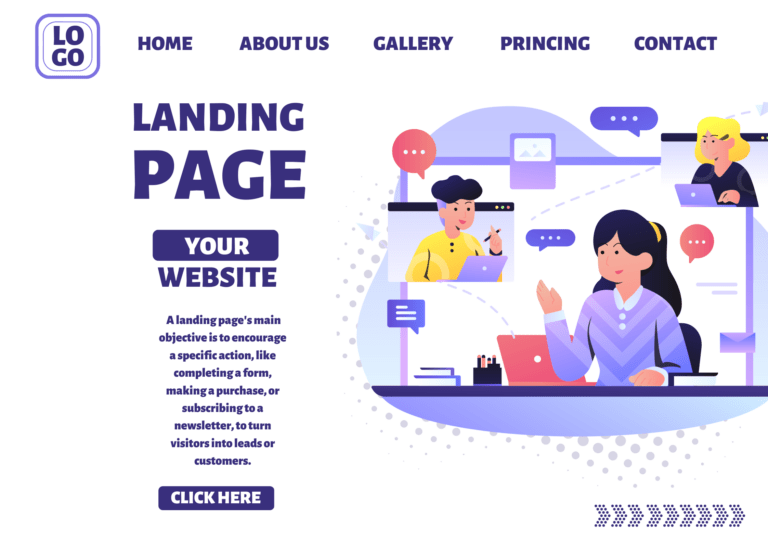Imagine that you are hosting a party, and you want your guests to have an amazing time. You decide to send out invitations that invite guests to give a preview of the party’s theme, atmosphere, and main attractions. This is what a landing page looks like.
Just like the invitation to the party, a landing page serves the same purpose for website users. This page aims to grab their attention and enable them to act on the website.
A good landing page can increase your conversions and enable visitors to surf around to find what they want. Let us learn more about landing pages and how you can create one for your business and drive traffic.

A landing page is a stand-alone webpage created especially for a marketing or promotion campaign. When a visitor clicks on a link from an online marketing channel, email, social media post, or search engine result, they are directed to a landing page. A landing page’s main objective is to encourage a specific action, like completing a form, making a purchase, or subscribing to a newsletter, to turn visitors into leads or customers.
Making a landing page for a business website involves a number of steps, from planning and design to implementation.
Read on to learn how you can create your landing page:
Give your landing page a clear purpose. Is it for lead generation, product sales, event promotion, or another purpose?
Recognize who your audience is and understand who your target market is. What are things they prefer, need, and their areas of pain? Tailor your landing page to resonate with your specific audience.
Choose a website platform or builder. Select a platform based on what you require. Popular choices with user-friendly interfaces and templates include WordPress, Squarespace, and Wix.
Write a catchy headline to capture attention. Catchy headlines hold the focus and talk about the value proposition of your offering.
Compose Persuasive and Clear Copy: Emphasize the advantages of your good or service by using persuasive wording. Write in a clear, simple-to-read manner with the user in mind.
Incorporate Captivating Visuals: Include images, graphics, videos, or illustrations to bolster your points. Visuals are an efficient way to grab someone’s attention and communicate ideas.
Add a Call to Action (CTA): Make it clear what action you would like visitors to take. Make the call to action (CTA) obvious if the goal is to complete a form, make a purchase, or subscribe.
Layout and Color Scheme Customization: Select the theme you like. Adjust the layout and color scheme to reflect your brand’s identity. Visitors trust websites with consistent branding and tone.
Optimize for Mobile: Make sure your landing page displays well on different types of devices, particularly mobile phones.
Install Analytics Tools: To track visitor behavior, convert visitors into leads, and learn more about how well your landing page is performing, integrate Google Analytics or other tracking tools.
A/B Testing: Use A/B testing to test various elements, like headlines, images, and call-to-actions, to see which ones your audience responds to the best.
Optimize for Performance: Find the areas that need improvement by analyzing the data. Try to improve usability, speed up load times, and modify your messaging in light of user behavior.
Publish your landing page and distribute the link to your landing page via online advertising, social media, email marketing, and other channels.
Track Performance: Look at all the necessary metrics from time to time and modify your plan in response to the data and information you collect.
Iterate Based on Feedback: Pay close attention to the feedback of the users and keep improving your landing page messaging, and the tone of your brand.
Remember that creating a landing page that works nicely requires constant optimization and improvement. Regular data analysis, asking for user input, and making adjustments to improve the page’s performance over time are the key elements of a well-performing landing page.
To sum up, a well-designed landing page is an essential tool for companies, acting as a focused entry point to turn leads into paying clients. A landing page can improve marketing efforts, encourage engagement, and gather important data by using compelling copy, optimizing for user experience, and aligning with specific goals. To ensure that the page consistently conveys compelling messages and encourages desired actions, regular testing, optimization, and monitoring are essential for long-term success. These efforts ultimately contribute to the success of your company’s online presence.
Empowering businesses to optimize their conversion funnels with AI-driven insights and automation. Turn traffic into sales with our advanced attribution platform.



